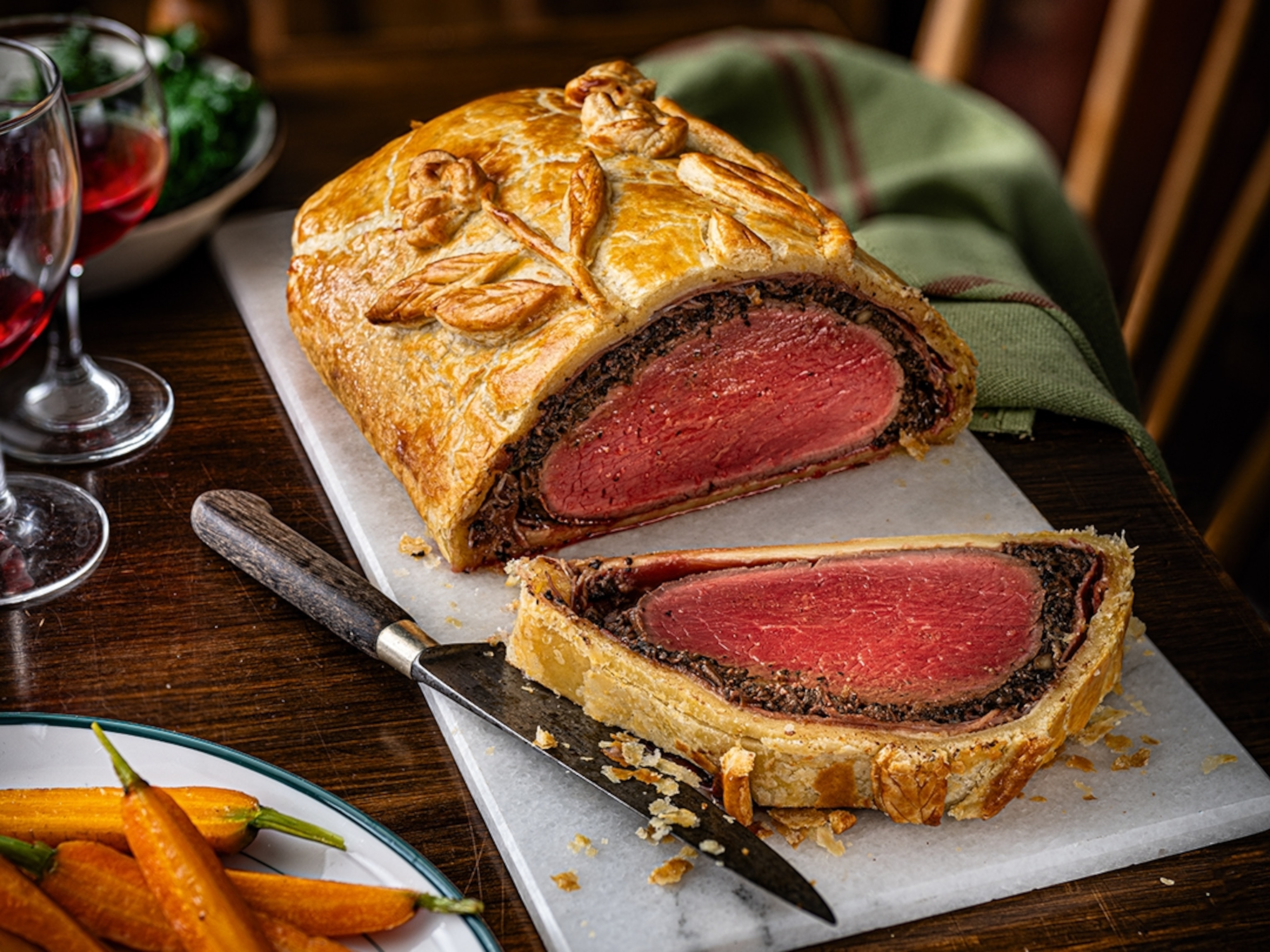
The story behind the pork pie
This portly pastry, filled with pork and savoury jelly, is a British classic dating back centuries.
Few dishes link Britain so closely to its gastronomic past as the pork pie. Indeed it’s one of the rare everyday foodstuffs that would be instantly recognisable to our medieval forebears. Perfect for picnics but spectacular enough to form the centrepiece at a party — they were the Christmas Day breakfast of novelist DH Lawrence — a pork pie is a foodstuff for every occasion.
Origins
According to The Oxford Companion to Food, by Alan Davidson, the pork pie is a direct descendant of the medieval raised pie, or coffyn, in which a sturdy crust acted as packaging for something more delicate and valuable. One might send wild venison into town wrapped in pastry, for instance. The likes of veal and ham, or mixed game, are still popular in raised (i.e. freestanding) pies; chef Calum Franklin has recipes for everything from coronation chicken to mac and cheese raised pies in his book The Pie Room. Plain pork, however, is now by far the most common filling.
The Leicestershire town of Melton Mowbray has been known for its pork pies since the 1700s — a by-product of the local cheesemaking industry (stilton is produced nearby), whose surplus whey proved ideal for fattening pigs. The resulting pies were an easy packed lunch for labourers, and became more widely popular thanks to Melton’s position in prime fox-hunting country. Wealthy huntsmen took their taste for this handy horseback snack away with them, and bakers began to sell to London by stagecoach in 1831.
Melton Mowbray pork pies are now available in every major supermarket, and were awarded EU protected geographical indication status in 2009 — which later became a UK protected geographic origin mark — limiting their production to a fixed region around the town.

How are pork pies made?
The most important element of a pork pie is the pastry, for it’s this robust casing that sets it apart from sausage rolls or hand-held, pasty-like pies. Rather than crumbly shortcrust or airy puff, it’s made from hot water crust pastry, a dense dough of flour, lard, salt and boiling water, thoroughly kneaded to develop the gluten and make it as strong as possible. Traditionally this was formed around a wooden ‘dolly’ mould and then baked without support, leading to a pie with the slightly bulging silhouette still found in the Melton Mowbray version, but others today are often packed into straight-sided tins instead.
Once upon a time such pies were probably a repository for more unusual parts of the pig, but these days they tend to be made with shoulder (as in Mark Hix’s recipe), belly (as preferred by the late Keith Floyd), or a mixture of both, minced — but not too finely. Because it contains fresh — rather than cured — meat, the inside of a Melton Mowbray pie is the grey of roast pork, rather than the ham-like pink common elsewhere, and seasoned with salt, pepper and nutmeg or mace. This filling shrinks during cooking, so once the pie has cooled, a savoury jelly is poured in through a hole on top to stop it drying out.

Where to try pork pies
Ye Olde Pork Pie Shoppe, Melton Mowbray
The most recent winner of the Melton Mowbray pork pie category at the British Pie Awards, Dickinson & Morris was first established in 1851, and has its outlet in the old bakery in town. As well as the classic version, it offers a pie with stilton, along with several less traditional options featuring the likes of chilli, black pudding and apple.
Stanforth Butchers, Skipton
Southerners used to enjoying their pies at room temperature should prepare to have their minds blown by the warm versions served at this celebrated North Yorkshire purveyor of pork pies. Just be sure to tuck a napkin into your collar before taking a bite, because they’re famously juicy.
The Wyre Pie Company, Tenbury Wells
Also available at various butchers and farmers markets throughout the Marches, the ‘Mr Williams’ sage and thyme-spiked pork pie scooped a coveted three stars at this year’s Great Taste Awards, with judges particularly impressed by the well-seasoned pork and jelly that’s “sweet, juicy and just rich enough to add further satisfaction.”





